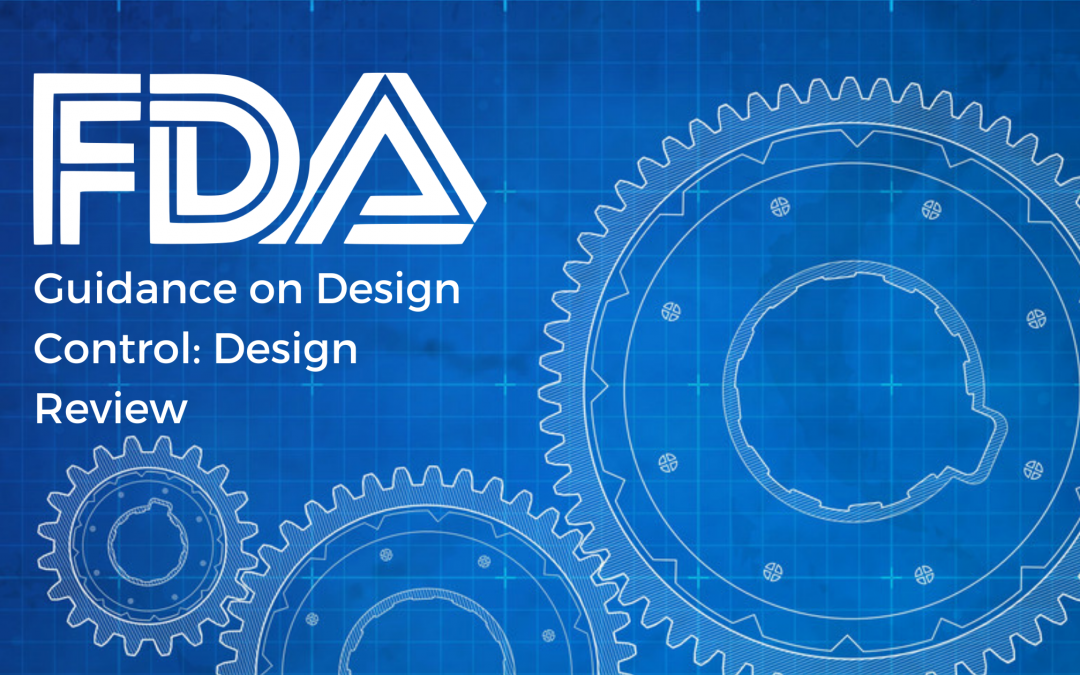The Food and Drug Administration (FDA or the Agency), the US regulating authority in the sphere of healthcare products, has published a guidance document on design control for medical devices. The document provides additional clarifications and recommendations to be considered by medical device manufacturers in order to achieve and sustain compliance with the applicable regulatory requirements.

Table of Contents
Due to their legal nature, guidance documents issued by the FDA do not introduce new rules or requirements, and provisions thereof are non-binding. Moreover, an alternative approach could be applied, provided such an approach complies with the requirements set forth by existing legislation and has been approved by the authority in advance.
Regulatory Background
First, the Agency outlines the main points related to the design review under the applicable legislation. It is stated that according to §820.30(e), each manufacturer shall establish and maintain procedures to ensure that formal documented reviews of the design results are planned and conducted at appropriate stages of the device’s design development. The regulation also mentions that such a procedure should outline the scope of responsible persons, as well as additional experts to be involved in the process. The results of a design review should be duly documented.
The document also refers to the applicable international standards, such as ISO 9001:1994 and ISO/DIS 13485.
In order to assist medical device manufacturers in the correct interpretation of provisions of the applicable legislation, the document also provides the definitions of a design review as set forth in the relevant regulation. As defined in §820.3(h), design review stands for a documented, comprehensive, systematic examination of a design to evaluate the adequacy of the design requirements, to evaluate the capability of the design to meet these requirements, and to identify problems.
Key Points
According to the present FDA guidance, formal design reviews are intended to:
- Provide a systematic assessment of design results, including the device design and the associated designs for production and support processes;
- Provide feedback to designers on existing or emerging problems;
- Assess project progress; and/or
- Provide confirmation that the project is ready to move on to the next stage of development.
The authority also distinguishes the internal and external focus of the reviews carried out during the whole medical device development process. The first one stands for the appropriateness of the design developed in the context of the manufacturing process, while the second one refers to compliance with the applicable regulatory requirements. It is stated that the scope of reviews would depend on the particular stage of the development process. First, the reviews will be carried out in order to ensure compliance with design input requirements. At the latter stages, the main focus will be shifted to the aspects related to manufacturing and then to the verification and validation.
The scope of the “review” concept covers a wide range of processes and procedures carried out by the medical device manufacturer. The authority additionally emphasizes the importance of distinguishing reviews and verifications depending on the scope – for reviews, it is usually quite wide, while verifications are usually focused on some particular aspects. Ordinary meetings carried out by the team engaged in the development process in order to find a solution for the particular issues should not be deemed reviews as well.

Design Review Program
In accordance with the guidance, in order to ensure the effectiveness of the design review process, a medical device manufacturer shall develop and implement a formal design review program, which should be aligned with the quality system requirements. In this regard, the following aspects should be considered:
- Number and Type of Reviews. The authority additionally emphasizes the importance of identifying and eliminating issues as early as possible, as late detection could result in a significant increase in expenses. Moreover, there will be less flexibility in the later development stages, so the development team will be limited in the solutions available. In certain cases, it will be impossible to eliminate one issue with our creating another one. That is why formal design reviews should be carried out in order to identify the issues in advance, while the procedures should provide the time necessary to take the actions required to correct such issues. According to the guidance, formal reviews should take place after each design and development phase. The design review often takes place upon completion of the design development before commencing the manufacturing process, while additional reviews are carried out using final devices. However, if it is vitally important to reduce the “time to market,” the time necessary for a medical device to become available to healthcare professionals and customers, the production of certain components could be launched even prior to the appropriate design review, provided that such a decision made by the manufacturer is based on the results of a rigorous risk assessment. Moreover, if such an approach is applied, there is always a risk that major issues would be identified in late stages, and such issues should be corrected before the device is placed on the market. The actual frequency of such reviews should depend on the complexity of the medical device in question.
- If the product itself is quite simple, or the development process is related to minor modification to a medical device already placed on the market, it will be sufficient to perform a review only one time once the design process is completed.
- In the case of a complex system, design reviews should be duly carried out with regard to each element of such a system in order to ensure it complies with the appropriate design requirements. In such cases, the development plan itself could also provide additional reviews, and their frequency will depend on the respective design and development stages.
- Selection of Reviewers. The scope of responsible persons to be engaged in design reviews should depend on their qualifications, the device in question and its specific features determining the expertise needed, and also the independence of the reviewers.
- Design Review Procedures. According to the guidance, a medical device manufacturer should duly develop and implement documented design review procedures covering such aspects as:
- Evaluation of the design (including identification of concerns, i.e., issues and potential problems with the design);
- Resolution of concerns;
- Implementation of corrective actions.
In summary, the present FDA guidance provides additional clarifications regarding the applicable regulatory requirements related to design reviews to be carried out by medical device manufacturers in order to verify compliance with the design requirements, applicable regulatory requirements, as well as feasibility of a new device and its components in terms of manufacturing processes. The document pays special attention to the procedures to be developed and implemented by medical device manufacturers and also emphasizes the importance of ensuring that the issues are identified at the earliest possible stages.
Sources:
How Can RegDesk Help?
RegDesk is a next-generation web-based software for medical device and IVD companies. Our cutting-edge platform uses machine learning to provide regulatory intelligence, application preparation, submission, and approvals management globally. Our clients also have access to our network of over 4000 compliance experts worldwide to obtain verification on critical questions. Applications that normally take 6 months to prepare can now be prepared within 6 days using RegDesk Dash(TM). Global expansion has never been this simple.


